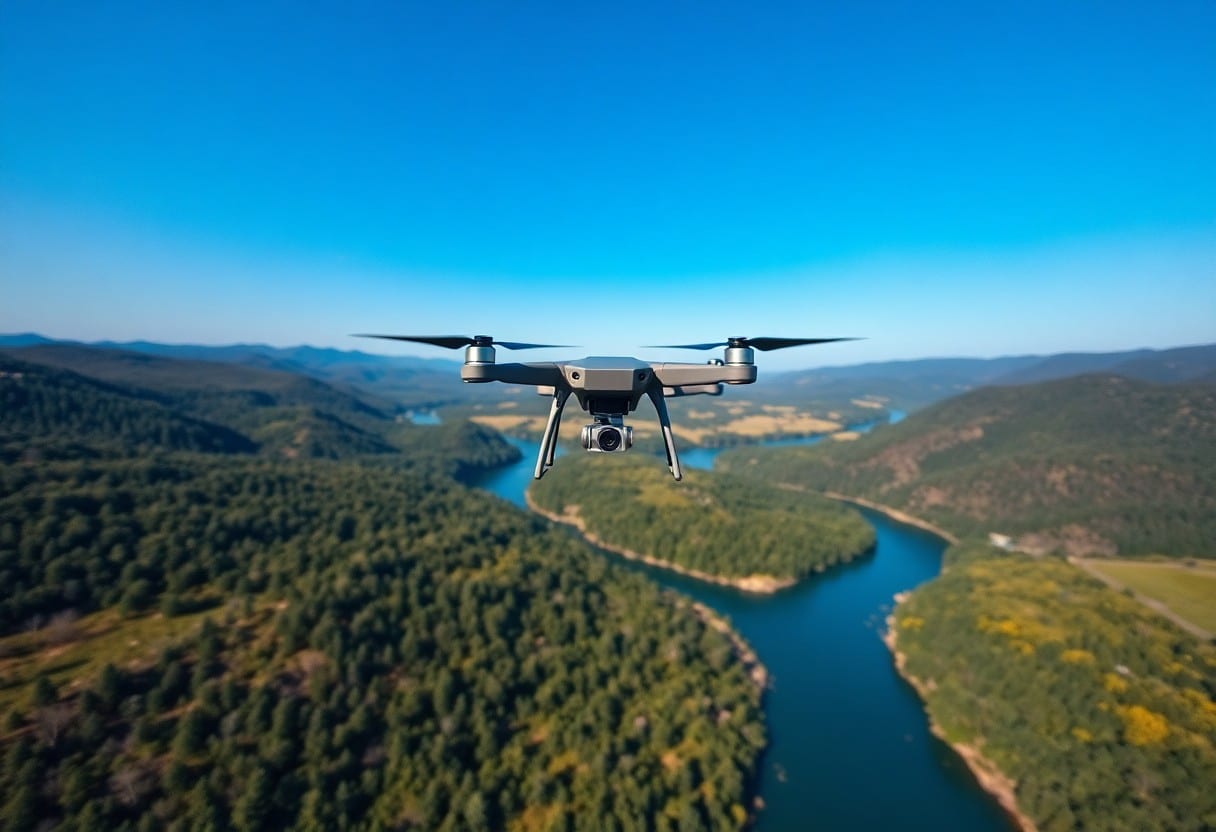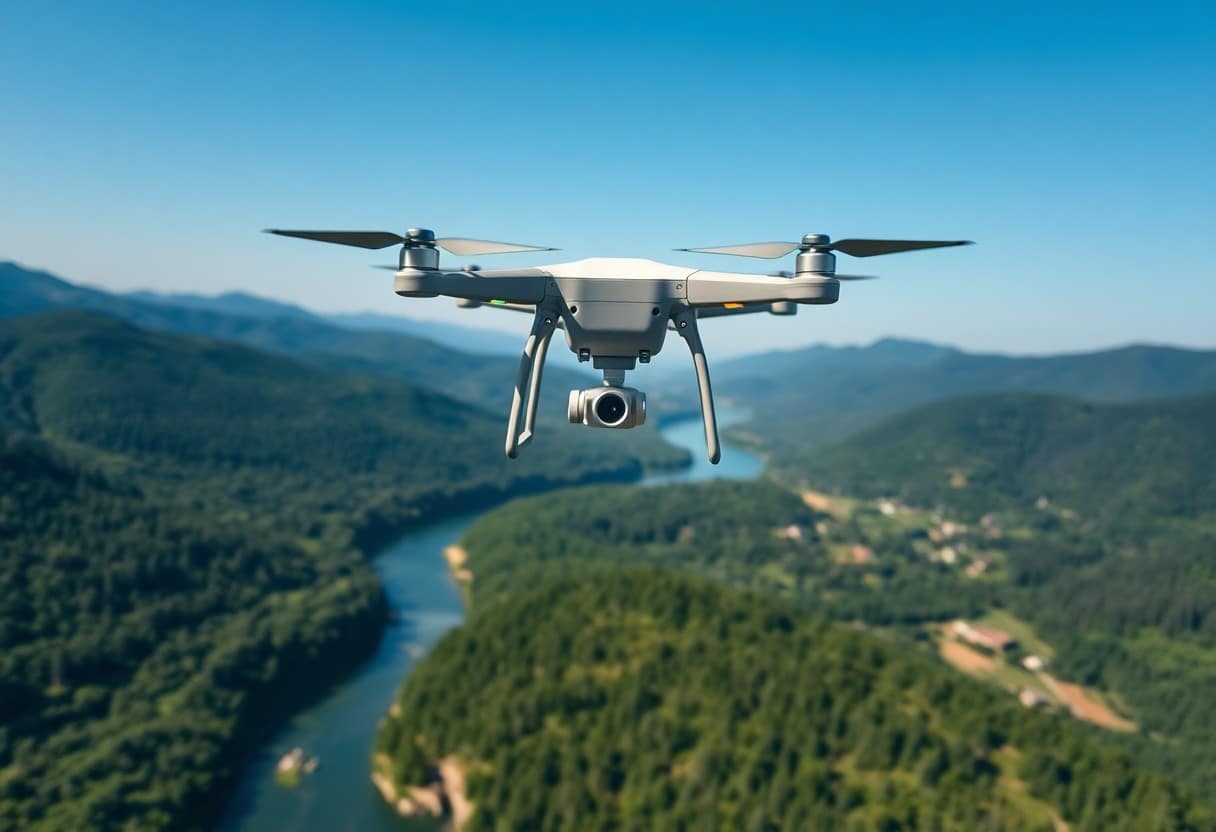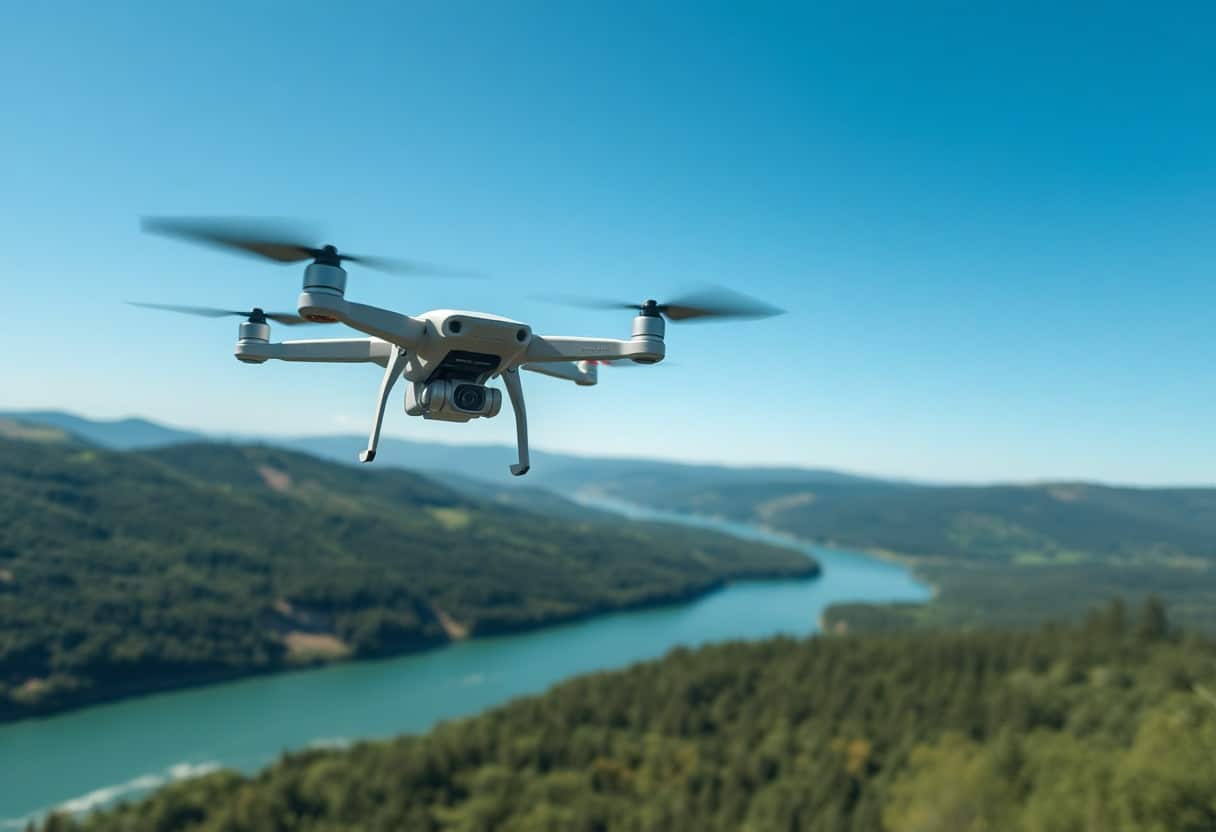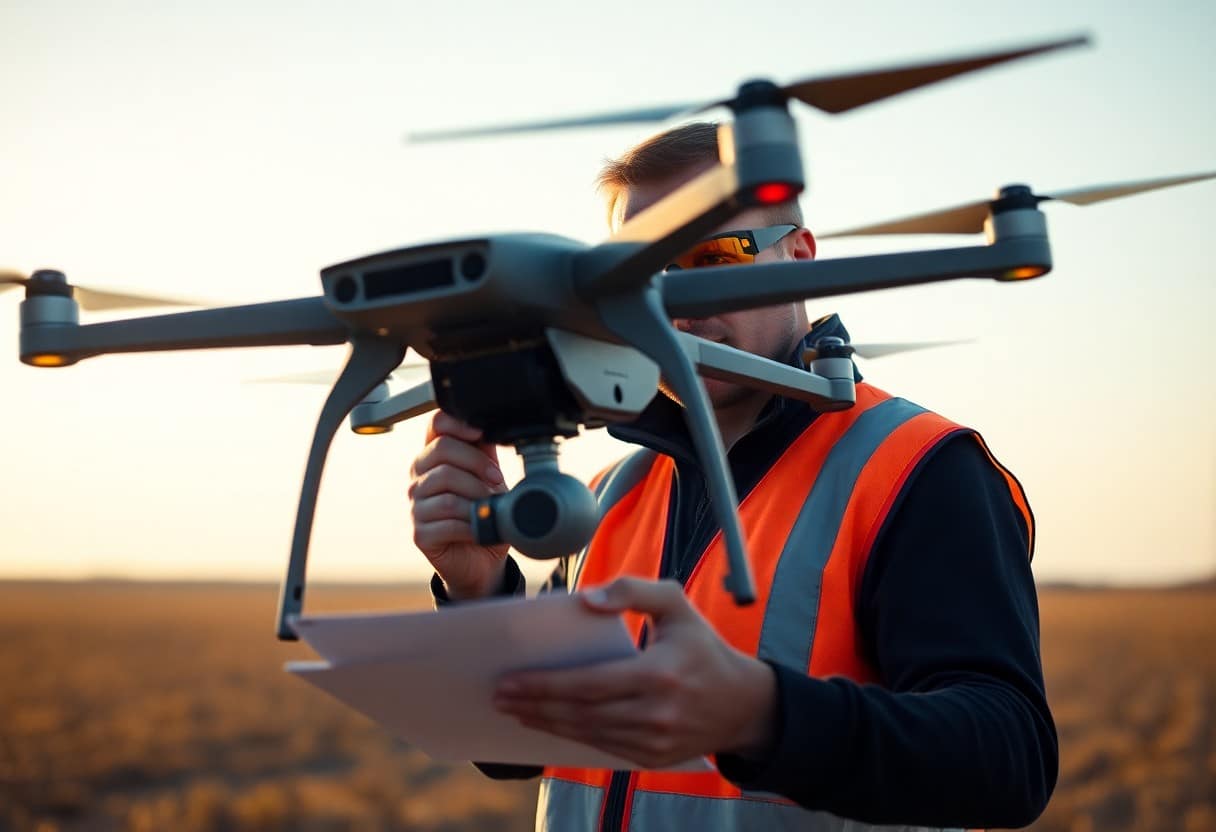How to Enhance Aerial Photography Techniques for Captivating Shots?
During aerial photography, you may be wondering how you can improve your skills to create compelling images. By mastering a fewKey Tipsrecognizing and understandingBest EquipmentYou will be able to achieve even better shooting results with the use of the In addition, selecting theSuitable Shooting Timerespond in singingperspectivesThis article will provide you with practical advice on how to make your aerial photography more visually appealing. This article will provide you with practical advice to help you easily enhance the appeal of aerial photography.
Important points:
- stability: Use a stabilizer or tripod to ensure that the picture is stable.
- light: Choose the best time to shoot and use natural light to enhance the texture of the image.
- Composition: Learn and apply compositional principles to enhance the visual appeal of a picture.
- Flying Techniques: Fly a drone and master different flight modes and techniques.
- EditingPost-Editing: Post-Editing is the key to enhance the smoothness and artistry of your movie by utilizing editing software.
- Creativity: Experiment with different camera angles and perspectives to stimulate creativity and capture the audience's attention.
- Equipment Upgrade: As technology advances, consider upgrading your filming equipment to obtain higher quality images.

Understanding the Basis of Aerial Photography
To improve your aerial photography skills, it's important to first understand the fundamentals of aerial photography. Aerial photography is not just about putting your camera in the air, it's about using your angle of view to show off the beauty of the scene. Learning about focus, exposure, and angle of view settings is the key to capturing compelling images. By mastering these basics, you'll be able to capture spectacular images more effectively and make your work more appealing.
Important Equipment for Aerial Photography
When doing aerial photography, select theCorrect EquipmentIt's important. Using a high quality drone with a stabilized camera will ensure that you capture clear, detailed images. In addition, choosing the right lens and taking into account battery life and control range are all factors you need to consider carefully before taking pictures.
The Importance of Composition in Aerial Photography
In aerial photography.Composition is the key to image quality.The composition of a picture is a good one. Good composition can direct the viewer's attention and enhance the overall aesthetics of an image. Remembering the "rule of thirds" or using symmetry and layering can help you create more attractive images.
When you learn to pay attention to composition, you will find that even simple scenes can show their unique beauty through reasonable composition.Experiment with different viewpoints and compositional techniques.that can give your images more storytelling and emotional depth. In addition.Clear themes and perspectivesIt can guide the viewer's eyes, making it easier for them to understand what you're trying to convey and increasing the appeal of your work.

Mastering Camera Settings for Aerial Shots
When performing an aerial shot, theIt's important to know your camera settingsThis will have a direct impact on the quality of the images you take. Mastering the ISO, shutter speed and aperture settings will allow you to better respond to different shooting situations and capture detailed and stable images.
Select the appropriate ISO, shutter speed and aperture.
When choosing ISO, you need to adjust it according to the lighting conditions to avoid overexposure or noise. Shutter speed affects motion blur and it is usually recommended to use a speed of at least 1/1000th of a second to capture fast moving images, while the choice of aperture affects the depth of field, with larger apertures being able to emphasize the subject.
Gain better control with the manual mode
Set your camera toManual ModeIt allows you to make precise adjustments to exposure, shutter speed, and aperture, thusGet better picture qualityand creative control. When using Manual Mode, you can flexibly adjust the settings according to the brightness of the actual scene and the desired effect without relying on the camera's automatic functions. This is especially important when dealing with unstable lighting conditions, ensuring that you get the best possible results from every shot you take.
Tips to get stunning aerial shots
To get compelling aerial images, you need to utilize a variety of techniques. Mastering different photographic techniques, such as smooth movement, proper composition, and utilizing special camera angles, can make your images more appealing. Through experimentation and practice, you will master the techniques and capture unique and stunning images.
Implement dynamic movement and angles
king (chess piece)Dynamic MovementIncorporating into your shots can give your images a sense of rhythm and energy. Experimenting with different types of movement, such as panning, elevating or rotating, and combining them with a variety of camera angles will give your captured scenes a greater sense of dimension and depth.
Utilizing natural light and weather conditions
Natural light is the key to improving the quality of your images. Make the most ofGolden Hour(The soft light (dawn and dusk) gives your painting a dreamy color. In differentClimatic conditionsShooting in fog, rain or sunlight gives the image a unique emotion and atmosphere, greatly enhancing its impact and beauty.
During filming.lightandWeather conditionsIt can greatly affect the performance of an aerial image. When the sunlight scatters through the clouds and creates a soft halo, you'll be able to capture more artistic images. In addition, foggy days can make a scene more dreamy, while cloudy days can emphasize color and contrast. For many photographers, these variations in the natural environment are powerful tools that help give their work a unique atmosphere and emotion.

Post-production Techniques to Enhance Aerial Footage
In the post-production phase, there are a few tricks you can use to enhance theAerial PhotographyTexture. First of all, edit the image to the best position to ensure a smooth rhythm to attract the audience's attention. Second, consider adding sound effects and background music, which will enhance the overall atmosphere. In addition, the use of stabilizers and de-jittering techniques can effectively reduce the vibration effect. Finally, you may wish to refer toUnlocking Drone Mapping - 7 Key Steps to Mastering Aerial 3D ReconstructionThese post-production tips will greatly enhance the quality of your aerial video. These post-production tips will greatly enhance the quality of your aerial video.
Video Editing Tips to Enhance Visual Appeal
Video editing is the key to enhancing the visual appeal of an aerial shot. You can use special effects such as slow motion or quick cuts to enhance the impact of certain moments. Add transitions to give the whole video a more professional look, and use sound effects to enhance the emotion. Essentially, you need to choose music that suits the theme and the background, which will resonate with your audience not only visually but also aurally.
Color Grading and Correction of Aerial Video
Color grading and correction is very important for aerial video because it shapes the overall atmosphere. Use professional editing software to adjust the color of the image.Contrast,Saturationrespond in singingcolor balanceThis not only enhances the beauty of the image, but also highlights the spectacular scene you've captured. This not only enhances the beauty of the image, but also highlights the spectacular scene you've captured. Make sure your colors are consistent so that the viewer is more easily drawn into the story. For aerial shots of landscapes, cities, and nature, bringing emotion and depth to the colors will be key to the success of your production.
Mastering color grading requires the use ofColor Wheelrespond in singingLook-up table (LUT)These techniques help you to emphasize certain colors while eliminating any unnatural tones. These techniques help you to emphasize certain colors while eliminating any unnatural tones.Important!Make sure the balance of colors does not make the video look too artificial. The ultimate goal is to preserve the subtlety of natural beauty and impress the viewer. With color correction, you can create a compelling visual story that draws the viewer into the world you've created.
Legal and Safety Considerations for Aerial Photography
When you're doing aerial photography, it's important to follow the laws and safety regulations to ensure your safety and the safety of others. Knowing your local laws, drone regulations and required permits is key to success. You can refer to this article How to choose the right 3D modeling software for your project?The most important thing you can do is to get more guidance on how to make your shoots safer and more legal.
Understanding Drone Regulations and Licensing
Before conducting aerial photography, it is important that you are aware of the local regulations and licensing requirements for drone use. Restrictions on drone flights can vary significantly from region to region, so make sure you follow the appropriate laws to avoid fines or other legal consequences.
Ensure the safety of yourself and others
While you are taking aerial photographs, it is important that you remain mindful of your own safety and the safety of others at all times. This includes following safety procedures, keeping the drone in sight, and avoiding flying over crowds. If you don't follow these guidelines, you may faceSerious injuryso much so thatLiabilityThe
When using the drone, you need to pay special attention toFlying Height,Weather conditionsand the environment around you. Ensure that the drone does not cause harm to you or others.injure, and follow the rules of any restricted areas. Regularly check your equipment to ensure it is functioning correctly, this effectively reduces the risk of accidents or loss of control and keeps everyone safe.
Learn from the experts
To improve your aerial photography skills, it's important to learn from industry experts. Through their experience and insights, you can discover the key elements to improve your shots. For a more in-depth look at aerial photography techniques, check out this articleA Step-by-Step Guide to Enchanting Aerial PhotographyThis will help you to capture a better picture.
Analyzing Successful Aerial Imaging Projects
Analyzing successful aerial images can give you insight into the application of different styles and techniques. Observing how composition, light and movement tell a story are all techniques you can practice on your own shoots.
Seeking inspiration from professional aerial photographers
When you are looking for inspiration, you may want to pay attention to the work of some professional aerial photographers. Their creativity and techniques will often stimulate your imagination and creativity. An in-depth understanding of their shooting styles and methods can help you find your own unique way of expression.
Observing the success stories of professional aerial photographers is a great aid in the quest for inspiration. These experts not only useHigh-quality technical equipmentThey also paid attention to the filming process.Changes in Landscaperespond in singinglighting effectBy analyzing these professional works in detail, you can learn how to use the right elements in your own shoots to get more attractive - aerial videos. By analyzing these professional works in detail, you can learn how to use the right elements in your own shoots to get more attractive - aerial videos.
How can you improve your aerial photography skills to get compelling images?
To improve your aerial photography skills and get compelling images, you should focus on a few key factors. First, make sure you familiarize yourself with your equipment, whether it's a drone or a camera, and master all of its functions. Secondly, learn to master lighting and composition, which will directly affect the quality of your images. Also, practice different camera angles and motion trajectories to create more dynamic and visually appealing images. Finally, keep observing and analyzing other great work to inspire your creativity. These methods will help you achieve greater success in aerial photography.
Frequently Asked Questions
Q: How can I improve my aerial photography skills to get engaging movies?
A: The key to improving your aerial photography skills lies in familiarizing yourself with your equipment, mastering camera angles, and using light and composition effectively. Regular practice and learning new techniques are also essential.
Q: What kind of aerial equipment should I choose to make an attractive movie?
A: Choosing the right drone for aerial photography depends on your needs. If you want high resolution images, consider a drone with a high quality camera. In addition, stability and ease of operation are also important considerations.
Q: How do I get the best light when shooting aerials?
A: Choose the golden hour, i.e. sunrise or sunset, when the light is soft and colorful. Also, avoid shooting at midday, as strong direct light will cause heavy shadows.
Q: How do I design the composition of my aerial video?
A: In terms of composition, you should follow the rule of thirds, dividing the screen into nine parts and focusing on the intersections. In addition, the layers of foreground, midground and background should be utilized to enhance the sense of depth of the film.
Q: What safety precautions should I take when shooting?
A: Ensure that your drone is operated in accordance with local laws, most of which prohibit flying in overcrowded airspace. Avoid flying over crowds of people and always monitor the drone's battery status and flight environment.
Q: How do I post-produce to enhance my aerial video?
A: Post-production can enhance the quality of your video by editing, color grading and adding sound effects. Using professional video editing software for fine editing and transition effects will enhance the movie's viewability.
Q: What are some common mistakes I should avoid?
A: Common mistakes include over-reliance on auto mode, ignoring the effects of wind, lack of stability during shooting, and failure to consider the diversity of the scene. Avoiding these mistakes can help improve the quality of your shots.




